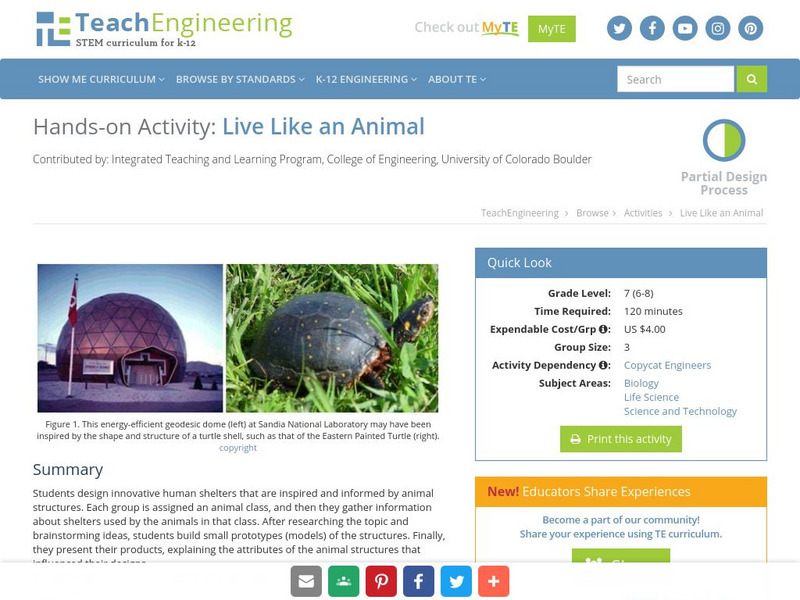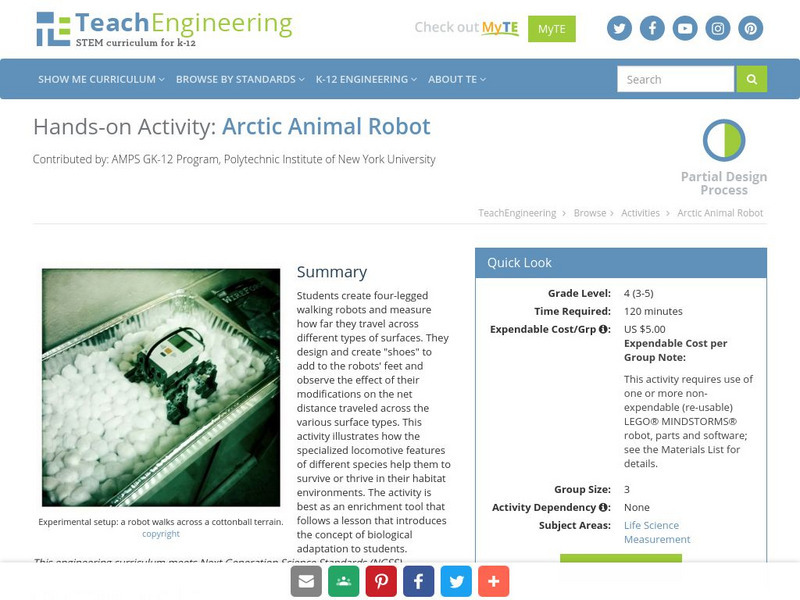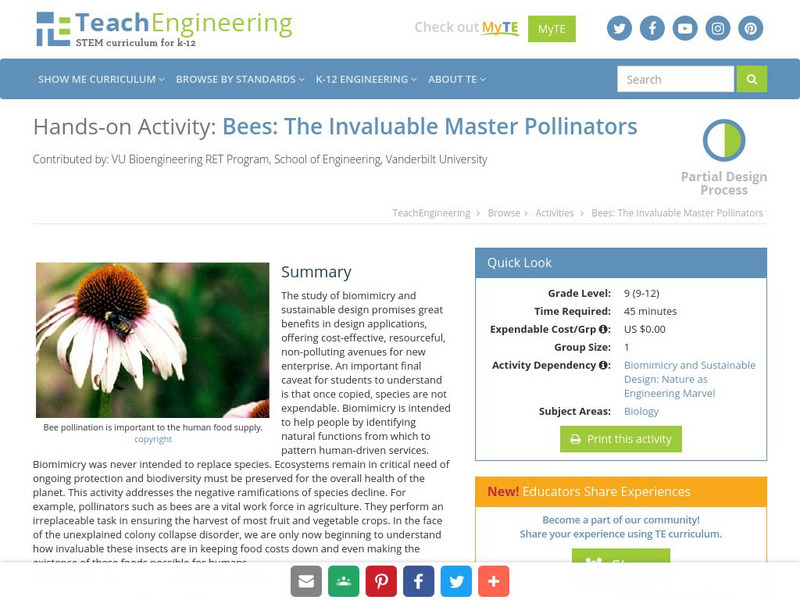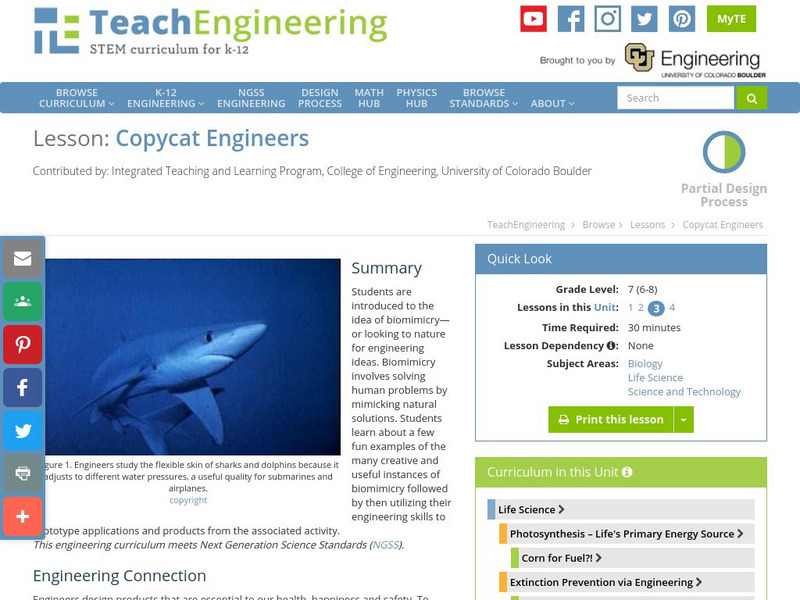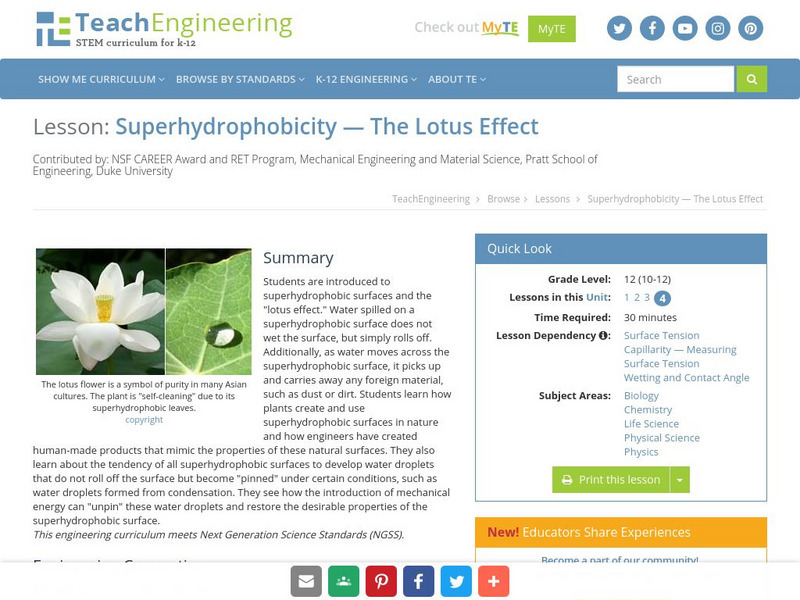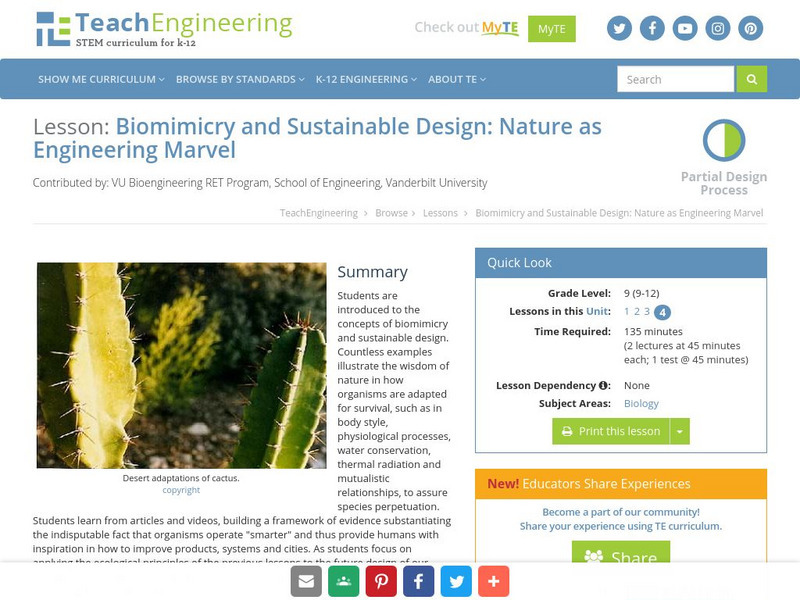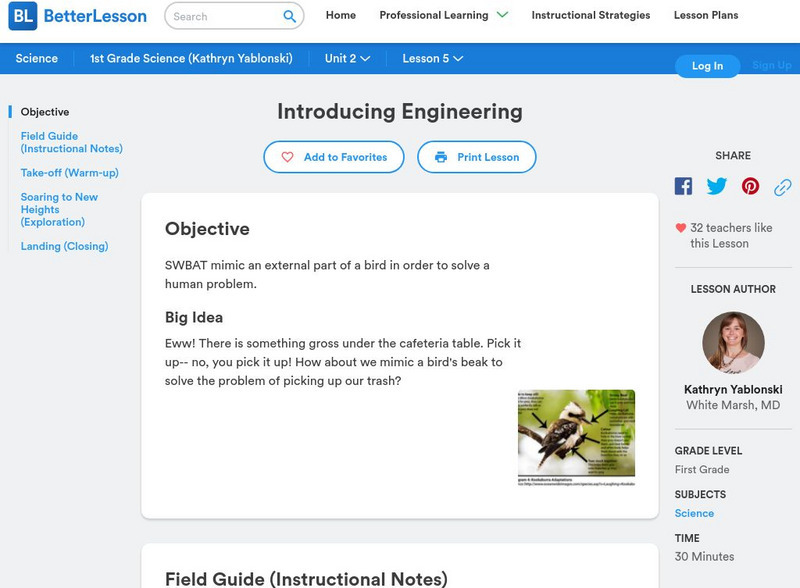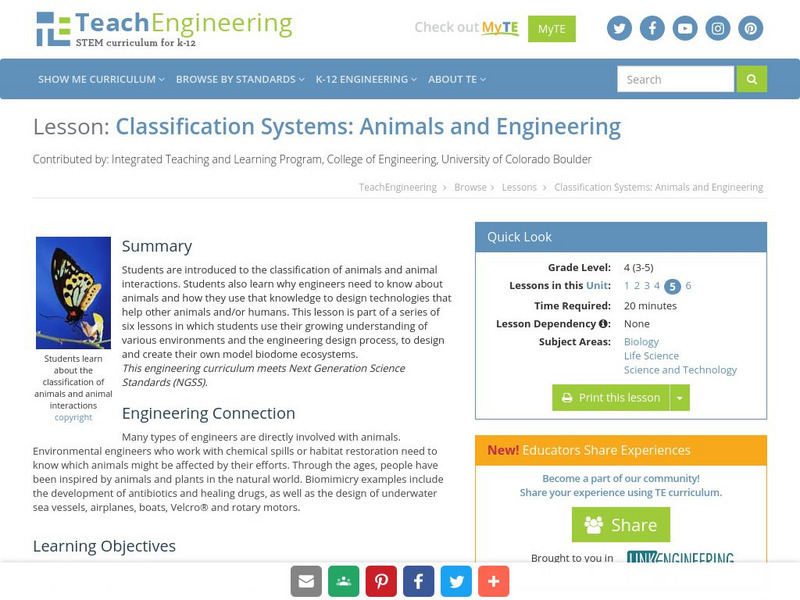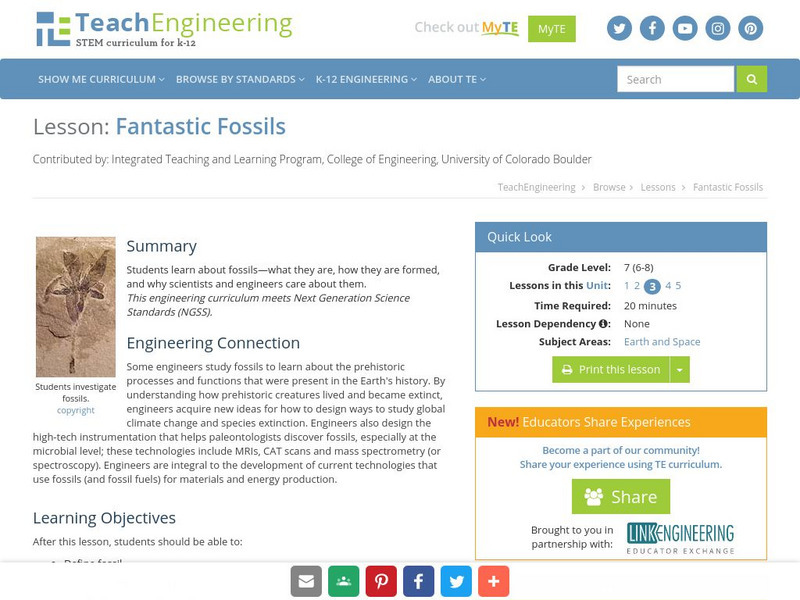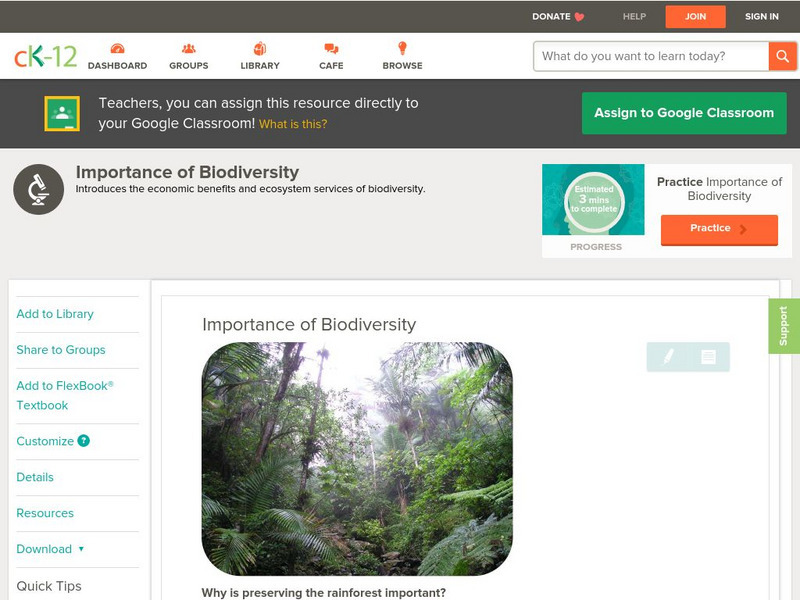Beyond Benign
Green Chemistry, Biomimicry and Intermolecular Forces
Did you know plywood was invented around 3500 B.C.? It was also featured as something new and unusual at the 1905 World's Fair. Scholars complete an experiment with various types of adhesive. Then they read three case studies and answer...
Science Buddies
Science Buddies: Project Ideas: Whirl Y Bird vs. Whale Y Bird
Improve the design of a very simple aircraft, the whirlybird, and learn about hydrodynamics and biomimicry in this science experiment. The Science Buddies project ideas are set up consistently beginning with an abstract, objective, and...
Other
Biomimicry Institute
Lessons about biomimicry and the beauty, elegance and inspiration of nature's designs.
Other
Neef: National Environmental Education Week
A toolkit preparing students with STEM knowledge to apply to solving environmental problems. Focused lessons on topics like biomimicry, environmental conservation, and sustainable energy. Games and apps are recommended.
TeachEngineering
Teach Engineering: Biomimicry: Natural Designs
Students learn about biomimicry and how engineers often imitate nature in the design of innovative new products. They demonstrate their knowledge of biomimicry by practicing brainstorming and designing a new product based on what they...
TeachEngineering
Teach Engineering: Live Like an Animal
In this activity, students design an innovative human shelter that is inspired and informed by an animal structure. Each group is assigned an animal class, and they gather information about shelters used by the animals in that class....
TeachEngineering
Teach Engineering: Design Inspired by Nature
Students discover how engineers can use biomimicry to enhance their designs. They learn how careful observation of nature can lead to new innovations and products. In this activity, students reverse engineer a flower to glean design...
TeachEngineering
Teach Engineering: Exploring the Lotus Effect
Students test and observe the "self-cleaning" lotus effect using a lotus leaf and cloth treated with a synthetic lotus-like superhydrophobic coating. They also observe the Wenzel and Cassie Baxter wetting states by creating and...
TeachEngineering
Teach Engineering: Arctic Animal Robot
Students create four-legged walking robots and measure how far they travel across different types of surfaces. They design and create "shoes" to add to the robots' feet and observe the effect of their modifications on the net distance...
TeachEngineering
Teach Engineering: Biomimicry: Echolocation in Robotics
Students use ultrasonic sensors and LEGO MINDSTORMS NXT robots to emulate how bats use echolocation to detect obstacles. They measure the robot's reaction times as it senses objects at two distances and with different sensor threshold...
TeachEngineering
Teach Engineering: Adaptations for Aeronautical Engineering
This activity first asks the students to study the patterns of bird flight and understand that four main forces affect the flight abilities of a bird. They will study the shape, feather structure, and resulting differences in the pattern...
TeachEngineering
Teach Engineering: Bees Are Master Pollinators
The study of biomimicry and sustainable design promises great benefits in design application. It affords means by which to promote cost-effective, resourceful, non-polluting avenues for new enterprise. These "blueprints" have existed...
TeachEngineering
Teach Engineering: Life Science
This unit covers the processes of photosynthesis, extinction, biomimicry and bioremediation. In the first lesson on photosynthesis, students learn how engineers use the natural process of photosynthesis as an exemplary model of a complex...
TeachEngineering
Teach Engineering: Photosynthesis Life's Primary Energy Source
This lesson covers the process of photosynthesis and the related plant cell functions of transpiration and cellular respiration. Students will learn how engineers can use the natural process of photosynthesis as an exemplary model of a...
TeachEngineering
Teach Engineering: Copycat Engineers
This lesson introduces middle schoolers to the idea of biomimicry, or looking to nature for engineering ideas. Biomimicry involves solving human problems by mimicking natural solutions, and it works well because the solutions exist...
TeachEngineering
Teach Engineering: Superhydrophobicity: The Lotus Effect
Students are introduced to superhydrophobic surfaces and the "lotus effect." Water spilled on a superhydrophobic surface does not wet the surface, but simply rolls off. Additionally, as water moves across the superhydrophobic surface, it...
TeachEngineering
Teach Engineering: Designing a Sustainable Guest Village
This lesson introduces students to their task of designing a permanent guest village within the Saguaro National Park. The design must provide a true desert experience to visitors while also emphasizing sustainable design, protection of...
TeachEngineering
Teach Engineering: Nature Is an Engineering Marvel
This lesson introduces learners to the concepts of biomicry and sustainable design. Students will learn to illustrate the wisdom of nature by demonstratiing how organisms adapt to their environment.
TeachEngineering
Teach Engineering: Implementing Biomimicry and Sustainable Design
This unit provides students with an opportunity to study ecological relationships with an emphasis on the Sonoran Desert. Students appreciate the complexity and balance that supports the exchange of energy and matter within food webs....
Other
Biomimicry Institute: Ask Nature
Many products in our world are designed by engineers and scientists whose inspiration and ideas come from nature. Presents strategies that humans have learned from nature and products that have been designed using nature's principles.
Better Lesson
Better Lesson: Introducing Engineering
There is something gross under the cafeteria table. Do you pick it up? Gross! How about we mimic a bird's beak to solve the problem of picking up our trash? This lesson models walking through the first few steps of the Engineering Design...
TeachEngineering
Teach Engineering: Animals and Engineering
Young scholars are introduced to the classification of animals and animal interactions. Students also learn why engineers need to know about animals and how they use that knowledge to design technologies that help other animals and/or...
TeachEngineering
Teach Engineering: Fantastic Fossils
Young scholars learn about fossils - what they are, how they are formed, and why scientists and engineers care about them.
CK-12 Foundation
Ck 12: Life Science: Importance of Biodiversity
[Free Registration/Login may be required to access all resource tools.] Biodiversity is a measurement of the amount of variation of the species in a given area. More specifically, biodiversity can be defined as the variety of life and...






